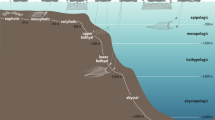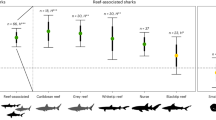Abstract
This paper describes and quantifies seafood consumption rates, and acquisition and preparation habits of 202 first- and second-generation Asian American and Pacific Islanders (AAPI) from 10 ethnic groups (Cambodian, Chinese, Filipino, Hmong, Japanese, Korean, Laotian, Mien, Samoan, and Vietnamese) in King County, Washington in 1997. Participants were all seafood consumers. Average and median seafood consumption rates were 117.2 and 89 g/day, respectively, based on the average body weight (62 kg) of participants. Shellfish comprised 45.9% and “all finfish” 43.3% of all seafood consumed. Consumption rates varied significantly between ethnic groups with Vietnamese (2.63 g/kg/day) and Japanese (2.18 g/kg/day) having the highest average consumption rates, and Mien (0.58 g/kg/day) and Hmong (0.59 g/kg/day) the lowest. The most frequently consumed finfish and invertebrates were salmon (93% of respondents), tuna (86%), shrimp (98%), crab (96%), and squid (82%). Fish fillets were eaten with the skin 55%, and the head, bones, eggs, and/or other organs 20% of the time. Crabmeat including the hepatopancreas (accumulates lipophilic chemicals such as organochlorine compounds) was consumed 43% of the time. This paper was a product of a Community–University Partnership. Community guidance in study design and data collection was essential for successful participation by the AAPI Community. Data reported here not only will provide risk assessors with AAPI-specific seafood consumption rates but with insights into cultural consumption/acquisition habits that may alter risk assessment assumptions for the AAPI Community.
This is a preview of subscription content, access via your institution
Access options
Subscribe to this journal
Receive 6 print issues and online access
$259.00 per year
only $43.17 per issue
Buy this article
- Purchase on Springer Link
- Instant access to full article PDF
Prices may be subject to local taxes which are calculated during checkout
Similar content being viewed by others
References
Allen J., Velez P., Diehl D., McFadden S., and Kelsh M. Demographic variability in seafood consumption rates among recreational anglers of Santa Monica Bay, California, in 1991–1992. Fishery Bull 1996: 94: 597–610.
American Samoa. Biological indicators of exposure to heavy metals in fish consumers, American Samoa Final Report: Technical Assistance to the American Samoan Government, Department of Health Services, Pago Pago, March, 1995.
Cassidy C. Walk a mile in my shoes: culturally sensitive food-habit research. Am J Clin Nutr 1994: 59 (Suppl): 190S–197S.
Chiang A. A seafood consumption survey of the Laotian community of West Contra Cost County, California. Asian Pacific Environmental Network, March 1998.
Clean Water Act. Section 304 (a). Appendix C — Guidelines and methodology used in the preparation of health effects assessment chapters of the consent decree water criteria document, 45 FR 79347, November 28, 1980.
Crane N., and Green N. Food habits and food preferences of Vietnamese refugees living in northern Florida. J Am Dietetic Assoc 1980: 76: 591–593.
CRITFC (Columbia River Inter-Tribal Fish Commission). A fish consumption survey of the Umatilla, Nez Perce, Yakima, and Warm Springs Tribes of the Columbia River Basin. CRITFC Technical Report 94-3, Portland, OR, 1994.
Crombi I., McLoone P., Smith W., Thomson M., and Pedo T. Inter-national differences in coronary artery disease mortality and consump-tion of fish and other foodstuffs. Eur Heart J 1987: 8: 560–563.
Federal Register. Vol. 62, No. 46, March 10, 1997, pp. 10856–10859.
Federal Register. Vol. 65, No. 214, November 3, 2000, pp. 664443–664482.
Fisher L., and van Belle G. Biostatistics: A Methodology for Health Sciences. John Wiley & Sons, New York, 1993.
Gilman S., Justice J., Saepharn K., and Charles G. Cross-cultural medicine a decade later. Western J Med 1992: 157: 310–315.
Gordon B., Kaug M., Cho P., and Sucher K. Dietary habits and beliefs of Korean-Americans in the San Francisco Bay Area. J Am Dietetic Assoc 2000: 100 (10): 1198–1201.
Hankin J., and Wilkens L. Development and validation of dietary assessment methods for culturally diverse populations. Am J Clin Nutr 1994: 59 (Suppl): 198S–200S.
Hutchinson R., and Kraft C. Hmong fishing activity and fish consumption. J Great Lakes Res 1994: 20 (2): 461–478.
Ikeda J., Ceja D., Glass R., Hardwood O., Lucke K., and Sutherlin J. Food habits of the Hmong living in central California. J Nutr Educ 1991: 23: 168–174.
Iso H., Sato S., Folsom A., Shimamoto T., Terao A., Munger R., Kitamura A., Konishi M., Iida M., and Komachi Y. Serum fatty acids and fish intake in rural Japanese, urban Japanese, Japanese American and Caucasian American men. Int J Epidemiol 1989: 18 (2): 374–381.
Javitz H. Seafood consumption data analysis. US EPA Contract 68-01-3887. Prepared by SRI International for the Office of Water/Regulations and Standards, Washington, DC, 1980.
Johansen H., Alexander J., Rossland O., Planting S., Lovik M., Gaarder P., Gdynia W., Bjerve S., and Becher G. PCDDs, PCDFs, and PCBs in human blood in relation to consumption of crabs from a contaminated Fjord area in Norway. Environ Health Perspectives 1996: 105 (7): 756–764.
Krall E., Dwyer J., and Coleman K. Factors influencing accuracy of dietary recall. Nutr Res 1988: 8: 829–841.
Kromhout D., Keys A., Aravanis C., Buzina R., Fidanza F., Giampoli S., Jansen A., Menotti A., Nedeljkovics S., Pekkarinen M., Simic B., and Toshima H. Food consumption patterns in the 1960s in 7 Countries. Am J Clin Nutr 1989: 49: 889–894.
Kudo Y., Falciglia G., and Couch S. Evolution of meal patterns and food choices of Japanese-American females born in the United States. Eur J Clin Nutr 2000: 54: 665–670.
Lee S., Sobal J., and Frongillo E. Acculturation and dietary practices among Korean Americans. J Am Dietary Assoc 1999: 99: 1084–1089.
Matter A. Paralytic shellfish poisoning:toxin accumulation in the marine food web, with emphasis on predatory snails: US EPA, Region X: US EPA 910/R94-005, 1994.
Nakamura K., Nashimoto M., Hori Y., and Yamamota M. Serum 25-hydroxyvitamin D concentrations and related dietary factors in peri- and post-menopausal Japanese women. Am J Clin Nutr 2000: 71: 1161–1165.
Puffer H., Azen S., Duda M., and Young D. Consumption rates of potentially hazardous marine fish caught in the Metropolitan Los Angeles area. Departments of Pathology and Preventive Medicine, Report No. US EPA-600/3-82-070, University of Southern California School of Medicine. Los Angeles, CA, June, 1982.
Shubat P., Raatz K., and Olson R. Fish consumption advisories and outreach programs for Southeast Asian immigrants. Tox & Ind. Health 1996: 12 (3/4): 427–434.
SPSS. Version 6.1. SPSS Inc. Chicago, U.S.A. 1994.
Toy K., Gawne-Mittelstaedt G., Polissar N., and Liao S. A Fish consumption survey of the Tulalip and Squaxin Island tribes of the Puget Sound region. Tulalip Tribes, National Resources Department, Marysville, WA, 1996.
US Census Bureau. “King County, Washington”, 1990.
US Department of Agriculture. Continuing Survey of Food Intakes by Individuals, Data Set and Documentation. Agriculture Research Service, Beltsville Human Nutrition Research Center, Beltsville, MD, 1990.
US EPA. Human health evaluation manual, supplemental guidance “Standard default exposure factors”, OSWER Directive 9285.6-03, March 25, 1991.
US EPA. Asian and Pacific Islander seafood consumption study: exposure information obtained through a community-center approach, EPA 910/R-96-007, US Environmental Protection Agency, Washington, DC, August, 1996.
US EPA. Exposure factors handbook. US EPA/600/P-95/002Fb, August, 1997.
US EPA. Asian and Pacific Islander Seafood Consumption Study in King County Washington. EPA 910/R-99-003, US Environmental Protection Agency, Washington DC, May, 1999a.
US EPA. Order 1000.17, Policy and Procedures on Protection of Human Research Subjects in EPA Conducted or Supported Research, July 30, 1999b.
US EPA. Methodology for deriving ambient water quality criteria for the protection of human health. EPA/822/B-00/004, Office of Water, Washington DC, 2000.
Weicha J., Herbert J., and Lim M. Diet measurement in Vietnamese youth: concurrent reliability of a self-administered food frequency questionnaire. J Community Health 1994: 19 (3): 181–187.
Wong K. Fishing for Food in San Francisco Bay: Part II. Save San Francisco Bay Association, 1997.
Acknowledgements
This study would not have been possible without the generosity of the Cambodian, Chinese, Filipino, Hmong, Japanese, Korean, Laotian, Mien, Samoan, and Vietnamese communities of King County and Simon Troung of the Refugee Federation Service Center. EPA Environmental Justice Grant No. 66–604 funded this study.
Author information
Authors and Affiliations
Corresponding author
Rights and permissions
About this article
Cite this article
Sechena, R., Liao, S., Lorenzana, R. et al. Asian American and Pacific Islander seafood consumption — a community-based study in King County, Washington. J Expo Sci Environ Epidemiol 13, 256–266 (2003). https://doi.org/10.1038/sj.jea.7500274
Received:
Accepted:
Published:
Issue Date:
DOI: https://doi.org/10.1038/sj.jea.7500274
Keywords
This article is cited by
-
Probabilistic risk assessment for high-end consumers of seafood on the northeastern Gulf coast
Journal of Exposure Science & Environmental Epidemiology (2020)
-
Demographic Profiles, Mercury, Selenium, and Omega-3 Fatty Acids in Avid Seafood Consumers on Long Island, NY
Journal of Community Health (2016)
-
Comparison of Contemporary and Heritage Fish Consumption Rates in the Columbia River Basin
Human Ecology (2015)
-
Mercury Exposure as a Function of Fish Consumption in Two Asian Communities in Coastal Virginia, USA
Archives of Environmental Contamination and Toxicology (2015)
-
Survey of fish consumption patterns of King County (Washington) recreational anglers
Journal of Exposure Science & Environmental Epidemiology (2007)



